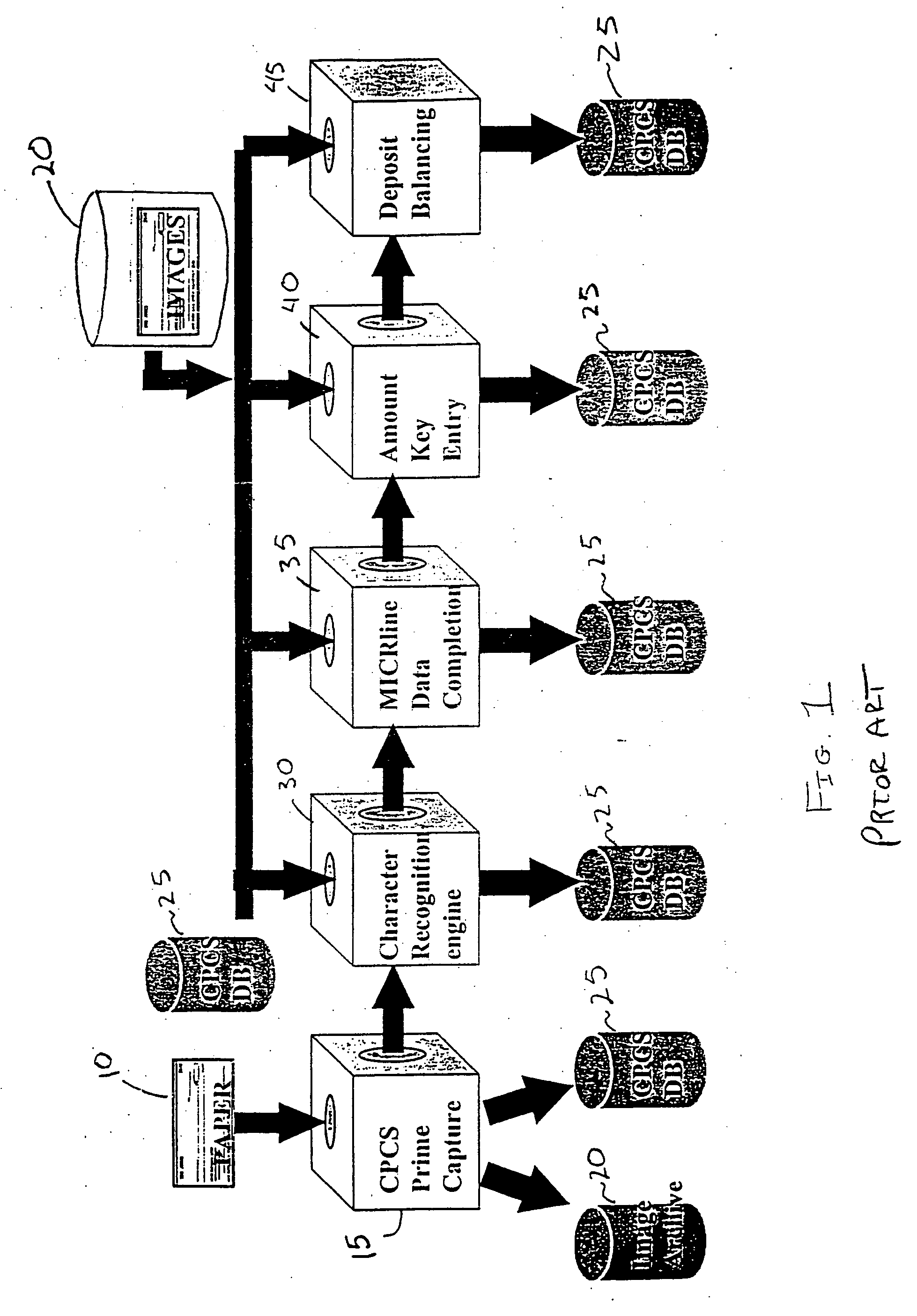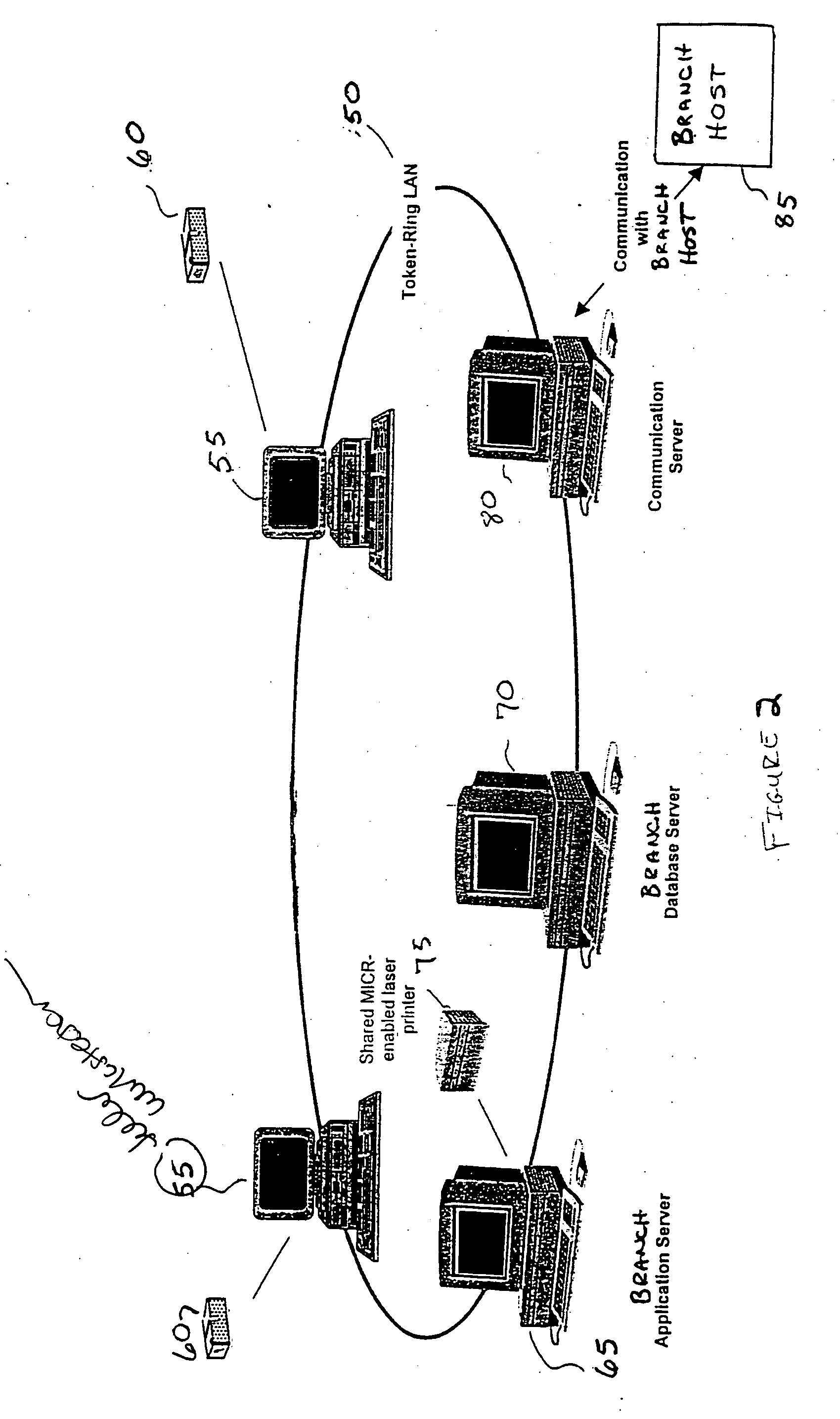System and method for back office processing of banking transactions using electronic files
a back office and electronic file technology, applied in the field of back office processing of bank transactions, can solve the problems of limited applicability of electronic journals, limited detail of transactions in electronic journals of the prior art, and laborious machines and prior art methods and systems for back office processing, so as to reduce labor and equipment, simplify the teller process, and reduce errors
- Summary
- Abstract
- Description
- Claims
- Application Information
AI Technical Summary
Benefits of technology
Problems solved by technology
Method used
Image
Examples
Embodiment Construction
[0026] As described above, part of the present invention involves the teller capturing information concerning a transaction as the transaction is being processed by the teller. FIG. 2 illustrates a typical hardware configuration at a branch which includes a token ring network 50 of workstations. One of these networks 50 is established at each branch of the bank. Elements 55 represent workstations for use by the tellers in conducting transactions (e.g., at a teller window with a bank customer). Each teller workstation 55 also includes a MICR reader 60 which enables the teller to scan the MICR encoding on checks and other instruments.
[0027] Server 65 is an application server, while server 70 is a database server. Each of these servers 65, 70 provide common access to all of the applications and databases used at the branch. Through the network 50, each of the teller workstations 55 have access to the applications and databases residing on servers 65, 70. The application server 65 is s...
PUM
 Login to View More
Login to View More Abstract
Description
Claims
Application Information
 Login to View More
Login to View More - R&D
- Intellectual Property
- Life Sciences
- Materials
- Tech Scout
- Unparalleled Data Quality
- Higher Quality Content
- 60% Fewer Hallucinations
Browse by: Latest US Patents, China's latest patents, Technical Efficacy Thesaurus, Application Domain, Technology Topic, Popular Technical Reports.
© 2025 PatSnap. All rights reserved.Legal|Privacy policy|Modern Slavery Act Transparency Statement|Sitemap|About US| Contact US: help@patsnap.com



